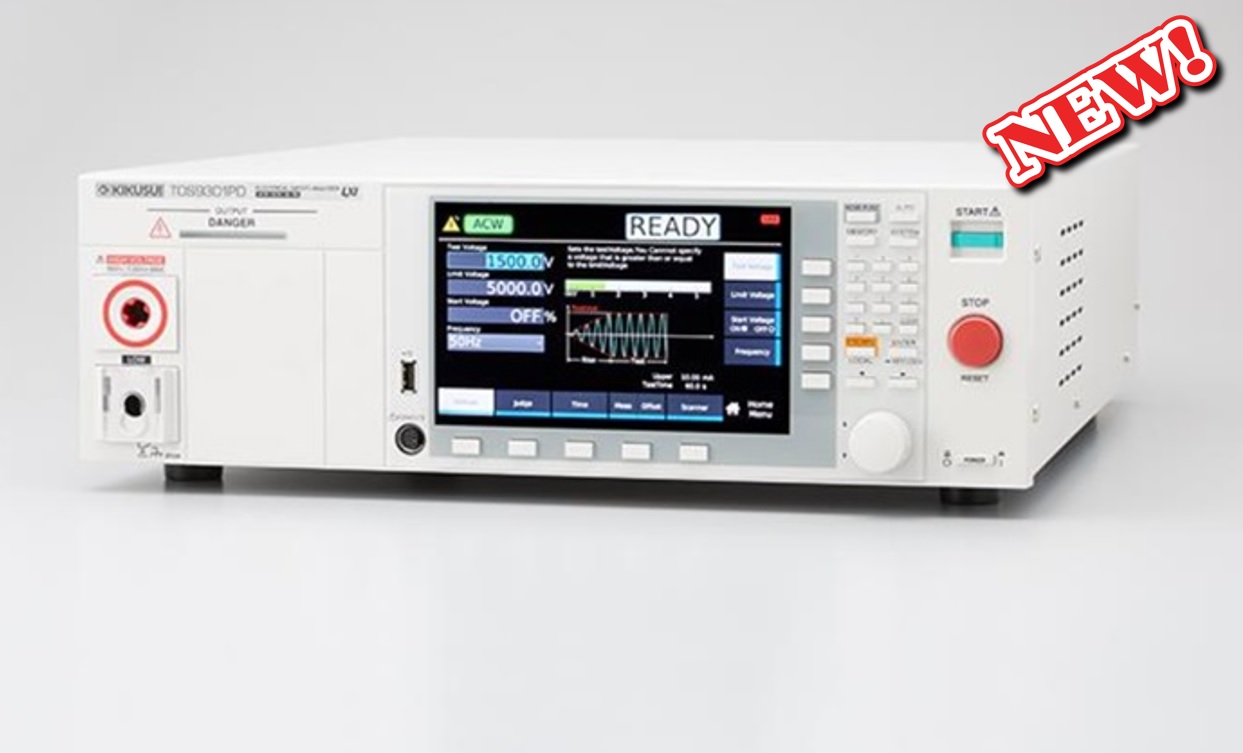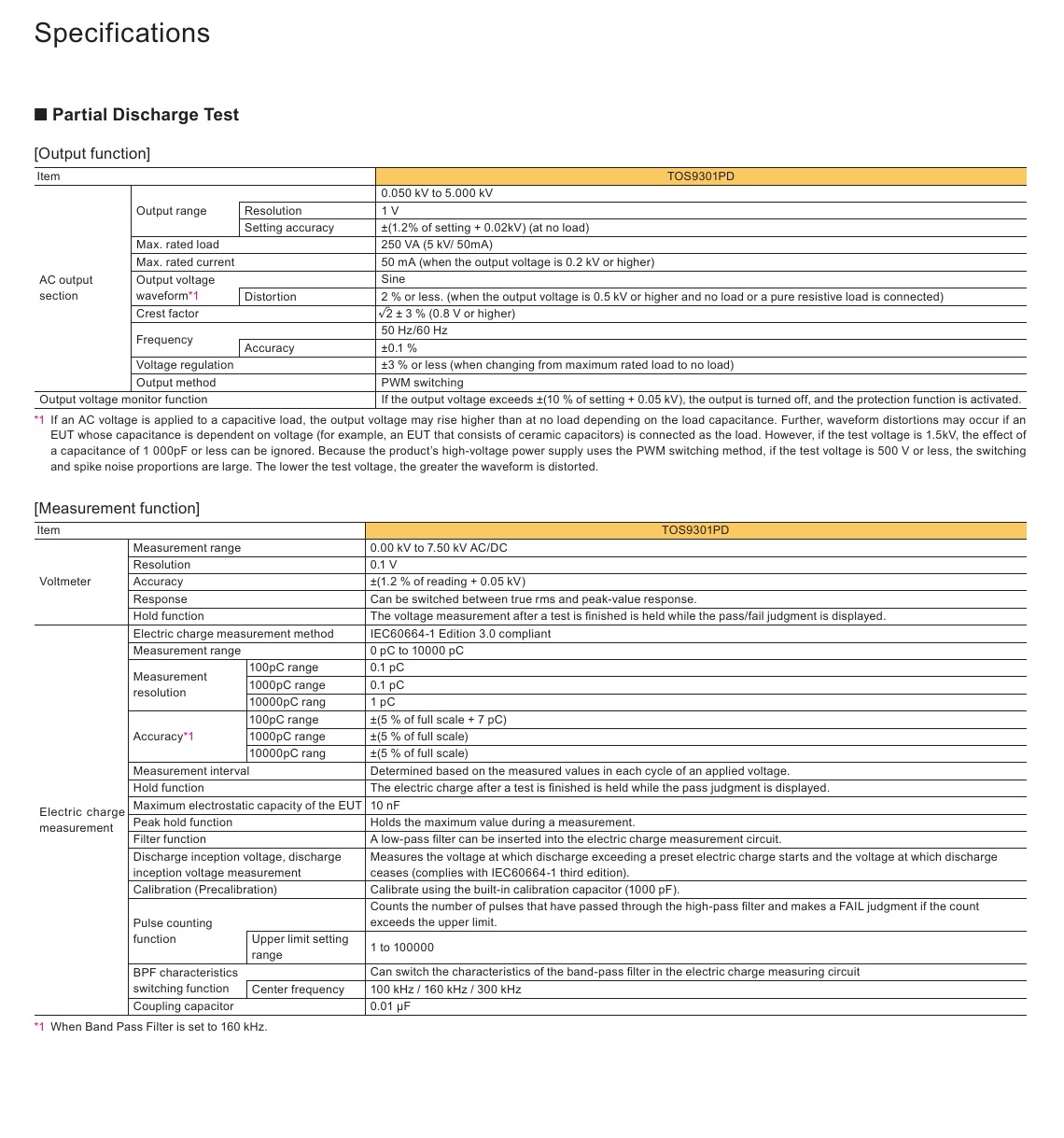This website uses cookies so that we can provide you with the best user experience possible. Cookie information is stored in your browser and performs functions such as recognising you when you return to our website and helping our team to understand which sections of the website you find most interesting and useful.


ITEMLIST
Products Infomation

Basic principles and difficulties in withstand voltage, partial discharge tests
Partial discharge is a partial breakdown of the dielectric at a small part of the insulation.
It is caused by gaps, cracks or impurities inside the dielectric material.
These gaps have very small capacitance, when a high voltage is applied between the electrodes of this gap and exceeds the breakdown voltage of the air it will discharge. This phenomenon is called partial discharge
During the withstand voltage test, a high voltage (usually AC) is applied to the equipment under test (DUT) and the leakage current through it is measured and evaluated. According to this principle, dielectric breakdown is determined by an increase in current. Therefore, if there is no current surge, the product is said to be in specification.
However, there are cases when partial discharge occurs and the DUT still passes the withstand voltage test. The KIKUSUI TOS9301PD allows these partial discharges to be detected and defective products ruled out (though the product still passes the high voltage test).
AC/DC high voltage tester, test insulation resistance and partial discharge.
Model:
TOS 9301PD
Maker:
KIKUSUI
Feature
- Max output voltage of AC hippot test: 5kV / 100mA (500VA)
- Maximum output voltage of hipot DC test: 5kV /20mA,7.2kV / 13.9mA (100W)
- Measuring range of insulation resistance test: 0.001M to 100.0 G (DC-25V to -1000V / DC + 50V to +7200V)
- Partial discharge maximum output voltage 5.000 k
- Partial discharge measurement range 0 to 10000 pC
- Provide Rise-time / Fall time control function
- Output and control panel voltage settings are controlled via LAN/USB/RS-232C.
Specification







